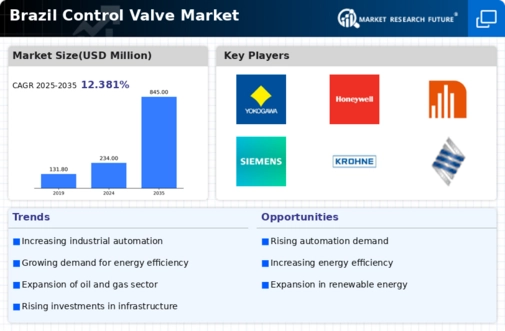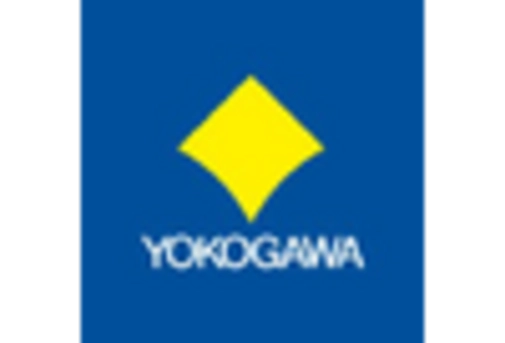Rising Demand in Oil and Gas Sector
The oil and gas sector in Brazil is experiencing a notable surge in demand, which is likely to drive the control valve market. As Brazil is one of the largest oil producers in South America, the need for efficient control systems in extraction and refining processes becomes paramount. The control valve market is expected to benefit from this trend, as these valves play a critical role in regulating flow and pressure in pipelines and processing plants. Recent estimates suggest that the oil and gas sector could contribute approximately 25% to the overall growth of the control valve market in Brazil by 2026. This increasing demand for automation and precision in operations further emphasizes the importance of control valves in maintaining safety and efficiency in the industry.
Expansion of Renewable Energy Projects
The expansion of renewable energy projects in Brazil, particularly in wind and solar energy, is expected to influence the control valve market positively. As the country aims to diversify its energy sources, the integration of control systems in renewable energy facilities becomes essential for optimizing performance and reliability. Control valves play a vital role in managing the flow of fluids in energy generation processes, ensuring efficiency and safety. The control valve market could see an increase of approximately 18% as investments in renewable energy infrastructure grow. This trend aligns with Brazil's commitment to sustainable energy solutions, further driving the demand for innovative control valve technologies.
Growth in Water and Wastewater Management
Brazil's ongoing efforts to improve water and wastewater management systems are likely to bolster the control valve market. With a significant portion of the population lacking access to clean water, the government has prioritized investments in infrastructure to enhance water distribution and treatment facilities. Control valves are essential in these systems, as they regulate water flow and pressure, ensuring efficient operation. The control valve market could see a growth rate of around 15% annually as municipalities and private companies invest in modernizing their water management systems. This trend not only addresses public health concerns but also aligns with Brazil's commitment to sustainable development, further driving the demand for advanced control valve solutions.
Regulatory Compliance and Safety Standards
The enforcement of stringent regulatory compliance and safety standards in Brazil is likely to propel the control valve market. Industries such as chemicals, pharmaceuticals, and food processing are subject to rigorous safety regulations, necessitating the use of reliable control systems. Control valves are critical in ensuring that processes operate within safe parameters, thereby minimizing risks associated with leaks and pressure failures. The control valve market may experience a growth rate of around 10% as companies invest in upgrading their systems to meet these standards. This focus on safety not only protects workers and the environment but also enhances the overall reputation of industries operating in Brazil.
Industrial Automation and Smart Manufacturing
The trend towards industrial automation and smart manufacturing in Brazil is poised to significantly impact the control valve market. As industries increasingly adopt automation technologies, the need for precise control systems becomes more pronounced. Control valves are integral to automated processes, allowing for real-time adjustments and improved operational efficiency. The control valve market is projected to grow by approximately 20% over the next five years, driven by the integration of IoT and AI technologies in manufacturing. This shift not only enhances productivity but also reduces operational costs, making it a compelling driver for the adoption of advanced control valve solutions across various sectors.






















Leave a Comment